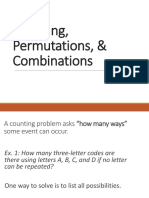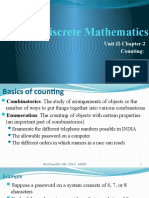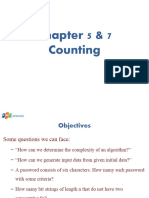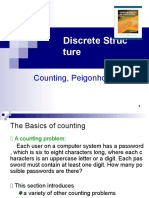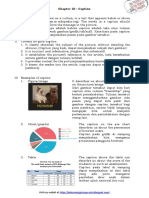Lecture 1 Advanced Analysis of Algorithms
Mathematical Foundations
Click to edit Master subtitle style Dr. Sohail Iqbal
11
�Outline
Growth of functions Summations and Recursions Sets, Relations, Functions, Graphs Counting and Probability
22
�Introduction
Performance comparison of two algorithm for sorting n integers: Algorithm A : n2 basic operations Algorithm B : 100 * nlogn+ 8 operations
Which algorithm is better???
33
�For n= 100 integers
.
x 00 0 00 . 0 00 . 0 00 . 0 00 . 0 00 . 0 0 n0 00 0 *nlog(n)+0
0
No of operations
0 0
0 0
0 0
0 0
0 0 n
0 0
0 0
0 0
0 0
00 0
44
�For n = 1000 integers
.
x 00 0 0 0 0 0 0 0 0 0 0 0 0 0 n0 00 0 *nlog(n)+0
0
No of operations
overtake at k = 650
00 0
00 0
00 0
00 0
00 0 n
00 0
00 0
00 0
00 0
00 00
55
�For n = 10,000
.
x 00 0 0 0 0 0 0 0 0 0 0 0 0 0 n0 00 0 *nlog(n)+0
0
No of operations
00 00
00 00
00 00
00 00
00 00 n
00 00
00 00
00 00
00 00
000 00
66
�Discussion
For all the sufficiently large values (k>650), algorithm B is performing better. Algorithm A : n2 basic operations Algorithm B : 100 * nlogn+ 8 operations Growth rate of algorithm B is slower than that of algorithm A. This leads to the idea of Big-O.
77
�Big-O Notation
Definition: Let f and g be functions from the set of integers or the set of real numbers to the set of real numbers. We say that f(x) is O(g(x)), if there are constants C and k such that
f (x) C g(x) , whenever x > k
88
�How to show
To show f (x) is O(g(x)): Find one pair (C, k) such that
f (x) C g(x) , whenever x > k
Note: This pair (C, k) is not unique. Hint: Select C and then find k.
99
�Big- Notation
Definition: Let f and g be functions from the set of integers or the set of real numbers to the set of real numbers. We say that f(x) is (g(x)), if there are constants C and k such that
f (x) C g(x) , whenever x > k
1010
�Big- notation
Definition: Let f and g be functions from the set of integers or the set of real numbers to the set of real numbers. We say that f(x) is Big- of (g(x)) if
f(x) is O(g(x)) f(x) is (g(x))
1111
Recursive Definition (Recursions)
1212
�A recursively defined picture
1313
�Recursions
A function or sequence is defined recursively, if
The value of a0 is given The value of an+1 is given in terms of an .
Example: The sequence can be n defined recursively as: an = 0
a0 = 0 an +0 = 0 an ,
1414
�Recursive definition
To define a function with the set of nonnegative integers as its domain,
Specify the value of the function at zero 2. Give a rule for finding its value as an integer from its values at smaller integers. Such definitions are called recursive or inductive definitions.
1.
1515
�Example
Suppose that f is defined recursively by f(0)=3 f(n+1)=2*f(n)+3 Find f(1), f(2), f(3), and f(5). Note: An inductive definition of a factorial is F(n+1)=(n+1)F(n), where F(0)=1
1616
�Recursive definition of summation
Give the recursive definition of
0
k=0
ak
The first part of the recursive definition is
k=0
ak = a0
the second part is
n ak = ak + an+0 k=0 k=0
n +0
1717
�Fibonacci numbers
The Fibonacci numbers f0, f1, f2, are defined by the equations:
f0 = 0 f0 = 0 and fn = fn- 0+ fn- 0 , ,
Find the Fibonacci sequence! What are the properties of this sequence?
1818
�Recursive algorithms
An algorithm is recursive if it solves a problem by reducing it to an instance of same problem with smaller input. Note: Many algorithms such as algorithms for finding the GCD or computing the nth power can be re-written as a recursive algorithms.
1919
�A recursive algorithm for computing an procedure power(a, n) if n = 0, then power(a, n) : = 1 else power(a, n) : = a* power(a, n-1) Note: a: non-zero real number; b: non-negative integer;
2020
�A recursive algorithm for computing gcd(a,b)
procedure gcd(a, b) if a = 0, then gcd(a, b) : = b else gcd(a, b) : = gcd(b mod a, a) Note: a and b are non-negative integers; a<b Example: gcd(24, 40)
2121
�A recursive binary search algorithm
procedure binary search(x, i, j ) m:= floor{(i + j ) /2} if x = am then location:=m else if (x < am and i < m) then binary search (x, i, m-1) else if (x > am and j > m) then binary search (x, m+1, j) else location: = 0
2222
�Counting
The basics of counting The Pigeon hole principle Permutations Combinations
2323
�The Sum Rule
If a first task can be done in m ways and a second task in n ways, and if these tasks cannot be done at the same time, then there are m + n ways to do either task.
2424
�Example
A student can choose a computer project from one of the three lists. The three lists contain 23, 15, and 19 possible projects, respectively. How many projects are there to choose from?
2525
�Example of code
What is the values of k after the following code has been executed?
k := 0 for i0:= 0 n0 to k := k + 0 e nd for i0 := 0 n0 to k := k + 0 e nd .... for im := 0 nm to k := k + 0 e nd
2626
�The Product Rule
Suppose a procedure can be broken down into two tasks. If there are m ways to do the first task and n ways to do the second task after the first task has been done, then there are mn ways to do the procedure.
2727
�Example
The chairs of an auditorium are to be labeled with a letter and a positive integer not exceeding 100. What is the largest number of chairs that can be labeled differently?
2828
�Example
How many different license plates are available if each plate contains a sequence of two letters followed by four digits?
2929
�Example of code
What is the values of k after the following code has been executed?
k := 0 for i0:= 0 n0 to k := k + 0 for i0 := 0 n0 to k := k + 0 .... for im := 0 nm to k := k + 0 e , e ,..., e nd nd nd
3030
�The Pigeonhole Principle
Theorem: If k +1 or more objects are placed in k boxes, then there is at least one box containing two or more of the objects. Proof: Suppose that none of the k boxes contains more than one object. Then the total number of objects would be at most k. This is a contradiction, since there are at least k +1 objects.
3131
�Examples
Among any group of 367 people, there must be at least two with the same birthday, because there are only 366 possible birthdays. How many students must be in a class to guarantee that at least two students have the same zodiac sign?
3232
�Generalized Pigeonhole Principle
Theorem: If N objects are placed into k boxes, then there is at least one box containing at least Ceiling(N/k) objects. Proof: Suppose that none of the boxes contains more that Ceiling(N/k)-1 objects. Then the total number of objects are:
k ( / k - 0 < k(((N / k) + 0- 0 = N N ) ) hence proved. ) a contradiction,
3333
�Example
Among 100 people there are at least how many who were born in the same month?
3434
�Permutations
A permutation of a set of distinct objects is an ordered arrangement of these objects. If a set contains n objects, and we are interested in the ordered arrangement of r objects, then this is called r-permutation, denoted by P(n, r).
n! P (n, r ) = Pr = (n - r )!
n
3535
�Example
How many ways are there to shelve 4 books out of 10 distinct books?
3636
�Combinations
A combination of a set of distinct objects is an un-ordered arrangement of these objects. If a set contains n objects, and we are interested in the un-ordered arrangement of r objects, then this is called r-combination, denoted by C(n, r).
n! C (n, r ) = C r = r !(n - r )!
n
3737
�Example
How many ways are there to select a team of 11 cricket players from a group of 14 players?
3838









